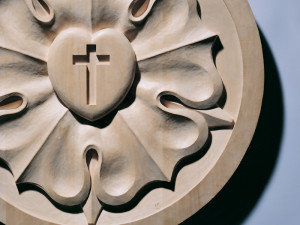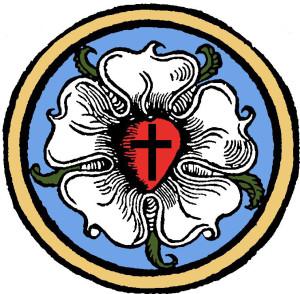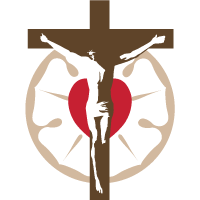by Deaconess Betsy Karkan
 From its roots in the Reformation to its carefully preserved remnant today, the history of confessional Lutheranism in Finland is a testament to the work of the Lord establishing and keeping His Church throughout all generations in every corner of the world.
From its roots in the Reformation to its carefully preserved remnant today, the history of confessional Lutheranism in Finland is a testament to the work of the Lord establishing and keeping His Church throughout all generations in every corner of the world.
At the time of the Reformation, Finland was a province of Sweden, governed by King Gustavus Vasa. The motivation for adopting the “Lutheran heresy”[1] as the national religion of the Kingdom of Sweden had more to do with the indebted king’s political strategy to take over the Church’s possessions than theological convictions. Vasa made accommodations to allow for a smooth and slow transition of doctrine and church practice and to avoid rebellion. The episcopacy was preserved, while monasteries were dissolved, “celibacy was abolished,” liturgy and writings were “purified of papist elements,” tithes were paid to the state, and theology students were sent to Wittenberg.[2]
Michael Agricola was among the early Finnish students sent to study theology under Luther and Melanchthon. As the foremost Reformer in Finland, Agricola is best known for his translation work that made Finnish a written language, giving him the title of the “father of Finnish literature.”[3] The first book printed in Finnish was Agricola’s ABC-kiria (1543), which included a catechism based largely on Luther’s Small Catechism.[4] His crowning achievement was the translation of the New Testament into Finnish (1548). Agricola was intentional in translating Luther’s writings on justification, the great solas, and any other works that were significant to Finnish church life and worship, such as the Psalms. Having the Scriptures and the liturgy in the vernacular was of utmost importance to him.
Throughout the next several centuries, Lutheranism became firmly established in Finnish culture and identity, although it underwent significant change due to the Enlightenment, pietistic revivals of the 18th and the 19th centuries, and several periods of political upheaval. When Finland became a part of the Russian empire in 1809, the Orthodox tsar allowed the country to retain its Lutheran identity. Until 1870 the Evangelical Lutheran Church of Finland was a state church.[5] Other significant events—including the transition of the church’s status from a state church to a “folk” church[6]; the independence of Finland in 1917; the passing of the Freedom of Religion Act of 1923; post-war secularization, urbanization and evangelical revivals—would continue to impact and alter the identity of the ELCF. The 1986 decision to ordain women, the 1992 Porvoo Common Statement of fellowship with Anglicans, the 2006 decision to stop ordaining men who do not co-operate with women clergy, and the 2011 acceptance of an order of public prayer for same-sex couples have been seen by many as concrete steps away from the foundation of the church of the Reformation.
Looking only at the ELCF, it would seem that little remains of the confessional Lutheran Church in Finland, yet the Lord is faithful to preserve His Church. The law of 1923 made it legal to be Lutheran but not belong to the ELCF. Some small independent synods were formed but they remained small and isolated. In 1999 a small group of Finnish Lutherans (one congregation with a part-time pastor) established the Luther Foundation Finland in response to the increasingly hostile situation in the ELCF towards its confessional clergy and members.[7] Just seventeen years later, this once-small group has grown into a much larger independent church (thirty-two congregations with thirty-seven pastors), the Evangelical Lutheran Mission Diocese of Finland—a home where the Word and Sacraments are rightly administered to those who were once “spiritually homeless.”[8]
 In January 2016, Bishop Risto Soramies, Dean Juhana Pohjola, and other leaders of the newly founded independent Nordic Lutheran Dioceses met with leaders of the International Lutheran Council to discuss membership. In an article about this meeting, Dr. Albert Collver notes that “despite the challenges the Lutheran church faces around the world in this day and age, the Lord has opened tremendous opportunities for the proclamation of the Gospel and for the encouragement of brothers and sisters in Christ.”[9] Indeed, just as in the time of the Reformation, the Lord is faithful to His Church amidst adversity, and by His grace He will continue to see it grow and flourish in Finland for many years to come.
In January 2016, Bishop Risto Soramies, Dean Juhana Pohjola, and other leaders of the newly founded independent Nordic Lutheran Dioceses met with leaders of the International Lutheran Council to discuss membership. In an article about this meeting, Dr. Albert Collver notes that “despite the challenges the Lutheran church faces around the world in this day and age, the Lord has opened tremendous opportunities for the proclamation of the Gospel and for the encouragement of brothers and sisters in Christ.”[9] Indeed, just as in the time of the Reformation, the Lord is faithful to His Church amidst adversity, and by His grace He will continue to see it grow and flourish in Finland for many years to come.
Deaconess Betsy Karkan serves at Concordia University-Chicago.
[1] Heininen, Simo. Finland. Vol. 2, in The Oxford Encyclopedia of the Reformation, edited by Hans J. Hillerbrand, 106-108. New York: Oxford University Press, 1996.
[2] Ibid
[3] Lenhammar, Harry. Agricola, Michael. Vol. 1, in The Oxford Encyclopedia of the Reformation, edited by Hans J. Hillerbrand, 11-12. New York: Oxford University Press, 1996.
[4] Ibid
[5] http://evl.fi/EVLen.nsf/Documents/894E3D73E89D172CC2257C310041D0BF?OpenDocument&lang=EN
[6] http://evl.fi/EVLen.nsf/Documents/BE3E3C50A2E82DB3C2257C3D003B5299?OpenDocument&lang=EN
[8] Ibid
[9] http://ilc-online.org/2016/01/20/the-nordic-lutheran-dioceses-and-the-international-lutheran-conference-discuss-membership/
